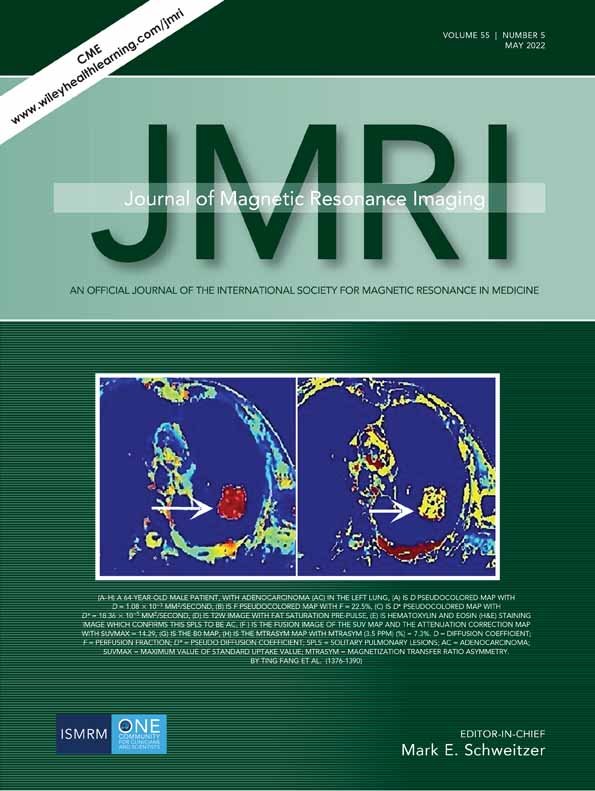Diverse Right Ventricular Remodeling Evaluated by MRI and Prognosis in Eisenmenger Syndrome With Different Shunt Locations
Chao Gong and Shuai He contributed equally to this work.
Contract grant sponsor: 1.3.5 project for disciplines of excellence, West China Hospital, Sichuan University (ZYJC18013).
Abstract
Background
Congenital shunt location is related to Eisenmenger syndrome (ES) survival. Moreover, right ventricular (RV) remodeling is associated with poor survival in pulmonary hypertension.
Purpose
To investigate RV remodeling using comprehensive magnetic resonance imaging (MRI) techniques and identify its relationship with prognosis in ES subgroups classified by shunt location.
Study Type
Prospective observational study.
Population
Fifty-four adults with ES (16 with pre-tricuspid shunt and 38 with post-tricuspid shunt).
Field Strength/Sequence
3.0 T/cine MRI with balanced steady-state free precession sequence, late gadolinium enhancement with inversion recovery segmented gradient echo sequence and phase-sensitive reconstruction, and T1 mapping with modified Look-Locker inversion recovery sequence.
Assessment
Demographics, clinical characteristics, hemodynamics, RV remodeling features (morphology, systolic function, RV–pulmonary artery (PA) coupling and myocardial fibrosis), and prognosis were compared between ES subgroups. The adverse endpoint was all-cause mortality or readmission for heart failure.
Statistical Tests
The independent samples t-test, Fisher's exact test or Chi-squared test, and the Kaplan–Meier method were used. P < 0.05 was considered significant.
Results
Compared to patients with post-tricuspid shunt, patients with pre-tricuspid shunt were significantly older and had higher N-terminal pro-B-type natriuretic peptide concentrations and poorer exercise tolerance. Pre-tricuspid shunt showed significantly larger RV dimensions (end-diastolic volume index: 185.81 ± 37.49 vs. 98.20 ± 36.26 mL/m2), worse RV ejection fraction (23.54% ± 12.35% vs. 40.82% ± 10.77%), and RV–PA decoupling (0.35 ± 0.31 vs. 0.72 ± 0.29). Biventricular myocardial fibrosis was significantly more severe in pre-tricuspid shunt than post-tricuspid shunt (extracellular volume, left ventricle: 35.85% ± 2.58% vs. 29.10% ± 5.20%; RV free wall: 30.93% ± 5.65% vs. 26.75% ± 5.15%). In addition, pre-tricuspid shunt demonstrated a significantly increased risk of adverse endpoint (hazard ratio: 2.938, 95% confidence interval: 1.204–7.172).
Data Conclusion
ES with pre-tricuspid shunt might be a unique subtype with worse clinically decompensated RV remodeling and poor prognosis.
Level of Evidence: 2
Technical Efficacy Stage: 5




